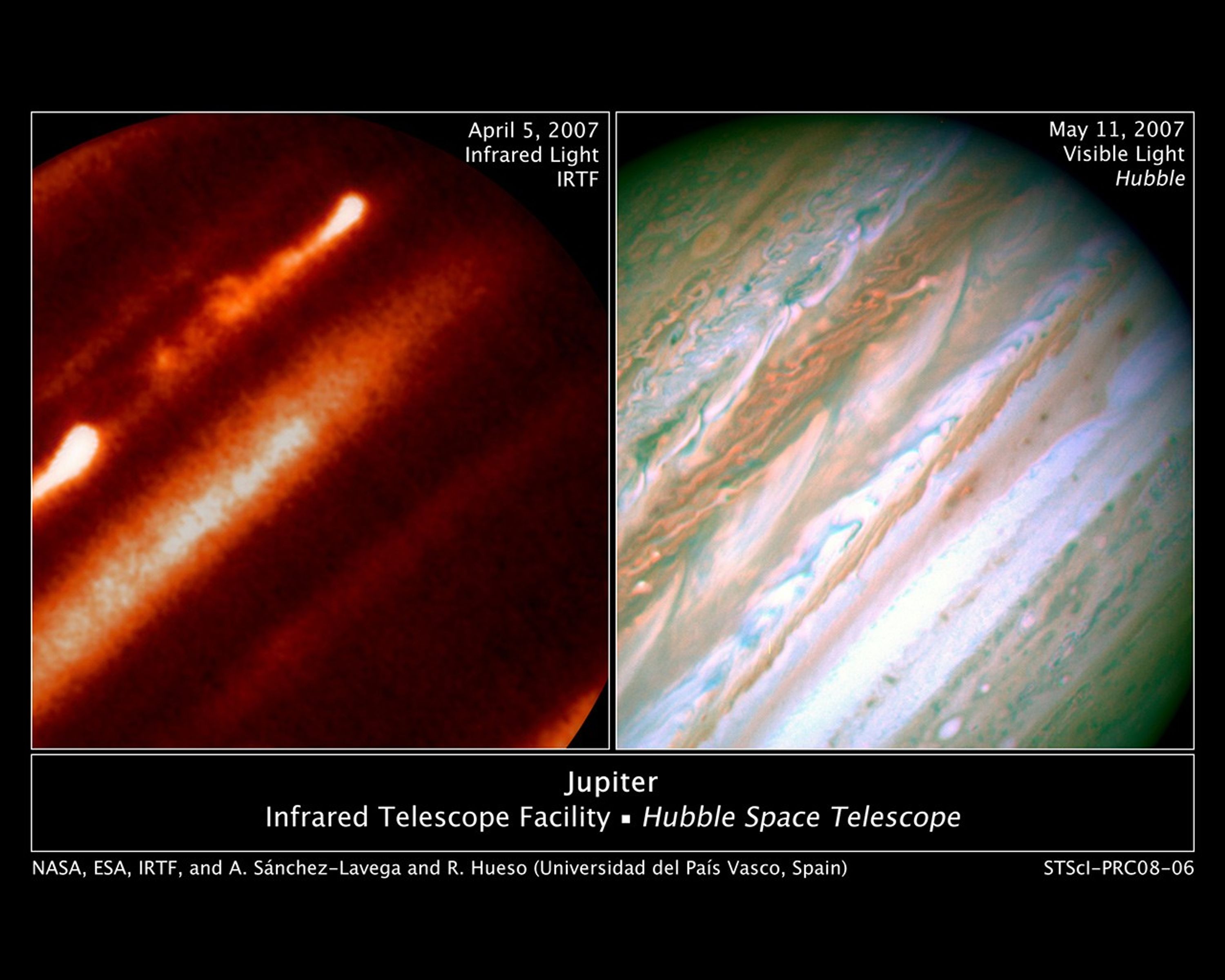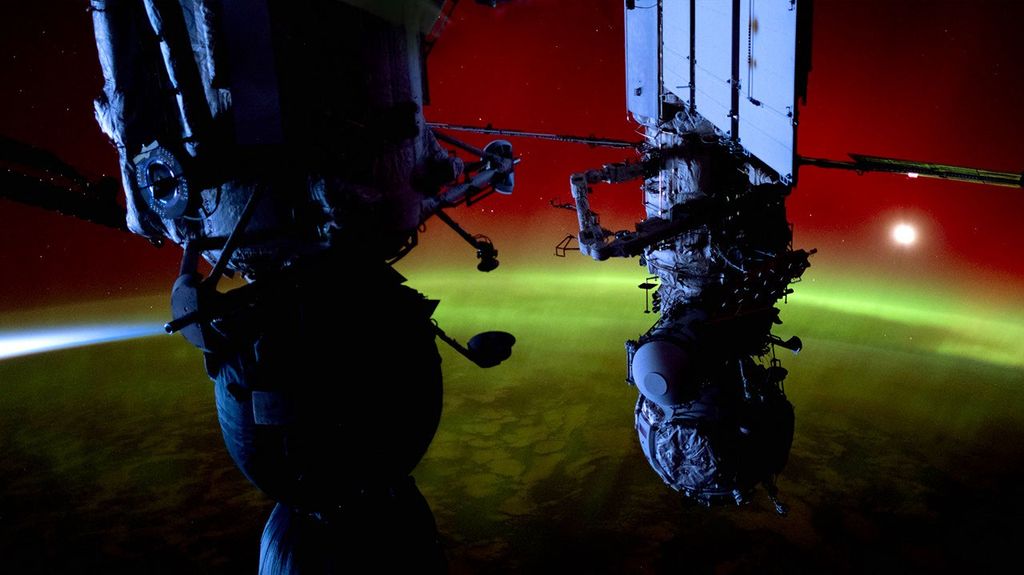Detailed analysis of two continent-sized storms that erupted in Jupiter's atmosphere in March 2007 shows that Jupiter's internal heat plays a significant role in generating atmospheric disturbances. Understanding this outbreak could be the key to unlock the mysteries buried in the deep Jovian atmosphere. An international team coordinated by Agustin Sánchez-Lavega from the Universidad del País Vasco in Spain presents its findings about this event in the January 24 issue of the journal Nature. The team monitored the new eruption of cloud activity and its evolution with an unprecedented resolution using NASA's Hubble Space Telescope, the NASA Infrared Telescope Facility in Hawaii, and telescopes in the Canary Islands (Spain). A network of smaller telescopes around the world also supported these observations.
1 min read
Internal Heat Drives Jupiter’s Giant Storm Eruption
Detailed analysis of two continent-sized storms that erupted in Jupiter's atmosphere in March 2007 shows that Jupiter's internal heat plays a significant role in generating atmospheric disturbances. Understanding this outbreak could be the key to unlock the mysteries buried in...
Related Images & Videos

Internal Heat Drives Jupiter's Giant Storm Eruption
Detailed analysis of two continent-sized storms that erupted in Jupiter's atmosphere in March 2007 shows that Jupiter's internal heat plays a significant role in generating atmospheric disturbances. Understanding this outbreak could be the key to unlock the mysteries buried in...

Hubble/IRTF Composite Image of Jupiter Storms
The background image is from Hubble Space Telescope and shows the turbulent pattern generated by the two plumes on May 11, 2007 (upper left part of Jupiter). The two bright plumes detach in the superimposed small infrared image obtained at the NASA-IRTF facility a month before,...
Share
Details
Last Updated
Mar 20, 2025
Contact
Media
Claire Andreoli
NASA’s Goddard Space Flight Center
Greenbelt, Maryland
claire.andreoli@nasa.gov

































